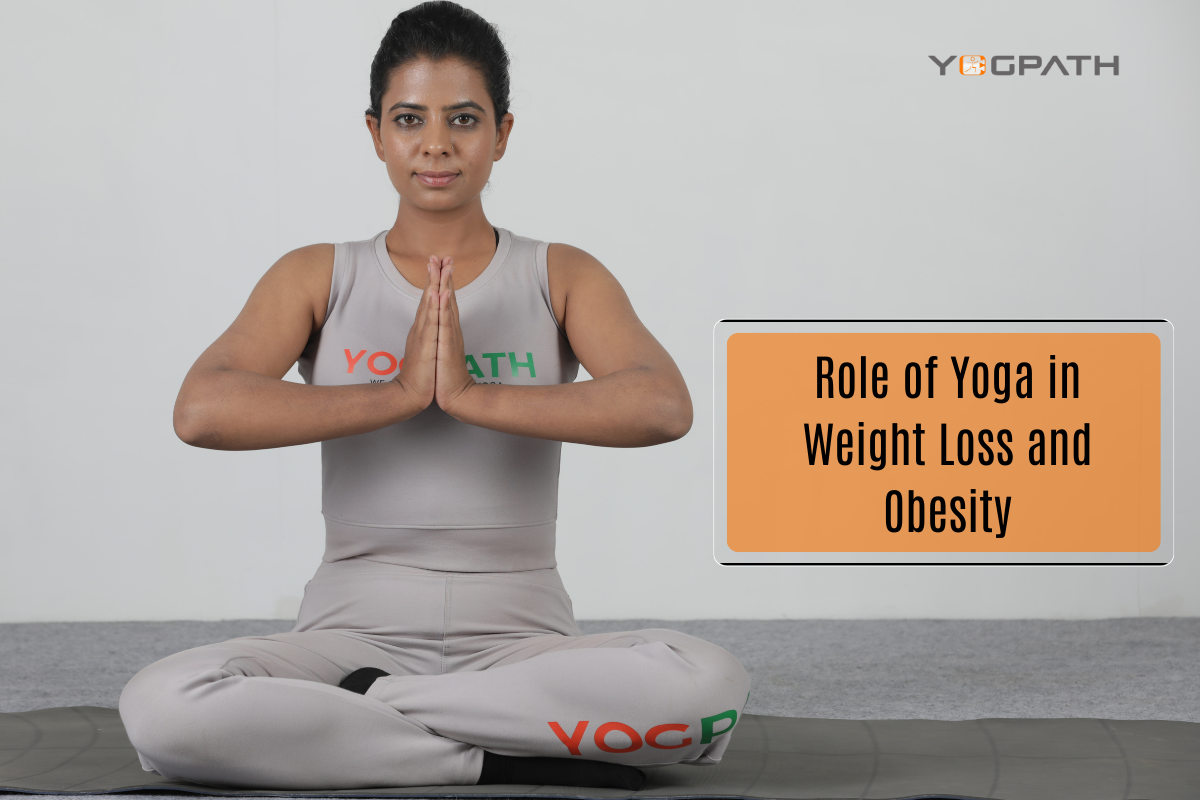
A recent study discovered that individuals who are obese or overweight may participate in yoga as part of a weight-reduction programmed that lasts for six months and may also be useful for weight loss. This finding was made possible by the fact that yoga is a low-impact form of exercise. The individuals in the study who practised one of two different kinds of yoga did not differ from one another in terms of how much weight they lost. Both kinds of yoga were equally effective.
Weight loss management and obesity
There is a connection between having an excessive amount of body fat and a variety of various forms of ailments that are long-lasting. Fortunately, studies have shown that cutting down on one’s overall body fat can lessen one’s risk of having a number of these diseases. Increased physical activity, in conjunction with dietary changes, has been shown to hasten initial weight loss by up to 20 percent and to improve one’s capacity to keep off lost weight once it has been shed. Beneficial Role of Yoga in Weight-Loss and Obesity management Program is a comparative study to understand the benefits of yoga and how yoga can help weight loss management and obesity.
This study helps bridge a knowledge gap on the possible function of two different kinds of yoga for weight reduction by looking at the topic from a scientific perspective. This weight-loss and obeisty management program study helped address a knowledge vacuum that had previously been present, despite the fact that the majority of studies on the function of physical activity in weight control has been on aerobic exercises like brisk walking or weightlifting.
Yoga Pose in Weight Loss
There were fifty people who were either obese or overweight, and as part of a behavioral weight-loss programme that lasted for six months, they were randomly allocated to either a restorative hatha yoga practise or a more intense vinyasa yoga practise.
vinyasa yoga for weight loss and obesity managment
The vinyasa yoga practice was more strenuous. This programme also included consuming fewer calories and less fat, and it also included a weekly group session on behavioral tactics to encourage weight reduction. Those who participated in this programme lost an average of one to two pounds each week. The majority of the focus in restorative hatha yoga is placed on maintaining restorative postures and poses for an extended amount of time.
This is intended to promote relaxation. Vinyasa yoga is a more difficult style of yoga in which a person moves constantly through a sequence of poses. Vinyasa yoga may be practiced by anybody, regardless of flexibility or experience. The majority of participants in the restorative hatha yoga group believed that the intensity of the class was equal to that of a brisk walk. This perception was driven by the fact that the emphasis of the practice was centered on sustaining postures throughout the whole session designed for yoga with weight-loss and obesity program.
The participants of the vinyasa yoga group, on the other hand, reported that the intensity was on level with that of a brisk walk. They said that this was due to the fact that they transitioned between poses and held positions throughout the practice.
Participants were told to practice yoga on five days out of the week, beginning with 20 minutes per day for the first 8 weeks of the study, and then progressing to 40 minutes, and eventually 60 minutes, each day. The procedure for the study was a protocol for an investigation. Four out of the five days of the yoga sessions were conducted at the residence of the participant, while the fifth day saw a teacher take charge of the sessions.
People who took part in vinyasa yoga and restorative hatha yoga both lost a significant amount of weight and improved their cardiorespiratory fitness, but there were no noticeable differences between the effects of the two styles of yoga that the participants practiced. The participants in the study increased the number of minutes and days per week that they spent practicing yoga from the beginning of the research to the completion of the study; nevertheless, there was no significant difference between the two groups in this regard.
People who practiced yoga for a longer amount of time were able to lose more weight. This was true both in terms of the total number of minutes as well as the total number of days throughout the course of the six-month period.
However, participants in the study noted that a lack of time was a barrier to their capacity to participate in yoga. This was particularly the case when the length of the prescribed yoga sessions increased to sixty minutes. People often only practiced yoga twice or three times per week, despite the fact that the suggested number of yoga sessions per week was five.
This was due to the fact that many people were too busy with their busy lives. Despite this, the majority of participants expected to continue practicing yoga after the research was finished. Of those in the hatha group, 65 percent intended to do so, and 85 percent of those in the vinyasa group intended to do so.
The findings of the study appear to offer support for the potential of integrating either restorative hatha yoga or vinyasa yoga as part of a weight-loss programme for the treatment of patients who are obese or overweight. The authors emphasize the importance of conducting additional research to compare yoga to other forms of physical exercise in terms of its long-term impact on weight reduction and the health consequences that are associated with it.











